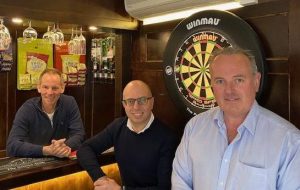Jackpot for Barcrest as it moves into profit

A TAMESIDE firm that designs and makes gambling games for amusement arcades has moved into profit.
In the year to September 30 Ashton-under-Lyne-based Barcrest Group’s bottom line was helped by higher sales and lower costs.
Managing director Robert White told TheBusinessDesk.com that the company had focused on improving the quality of its products and this has led to greater sales volumes.
Newly-filed accounts show sales were up 2.1% to £32.8m while the firm made a pre-tax profit of £2.1m compared with a loss before tax of £1.8m last time. The cost of sales fell 7.5% while administrative expenses dropped by 15%. Mr White said changes to the cost base were due to a reorganisation of the business following several acquisitions in 2008.
Legislative changes in the Gambling Act, which came into force in 2007, have also enabled the company to place machines in pubs and clubs from which it earns income. During the year it more than doubled the number of machines which generate recurring revenue.
“We’ve been able to leverage our access to capital to put these machines in on the basis of recurring revenues so operators don’t have to find their own capital,” said Mr White who admitted the Gambling Act, which also introduced changes to stakes and prizes, combined with the impact of the smoking ban had affected demand.
The VAT increase to 20% in January will also affect income from gaming machines because the price of play is fixed. “For every £1, that’s assumed to be inclusive of VAT so any increase means there’s less available to the retailer,” said Mr White. “It is a concern and will put pressure on machine incomes. We must maintain investment in our products to mitigate that increase.”
The business is controlled by IGT-UK, the UK arm of US-based International Game Technology. IGT-UK also owns the mobile gaming specialist Million-2-1 which it bought from Chris Sheffield in 2008 and Wilmslow-based WagerWorks, a developer of games for the internet and TV.
During 2009 the number of people working for the company fell by 13, or 5%, to 234 due to a reduction on the manufacturing staff.








